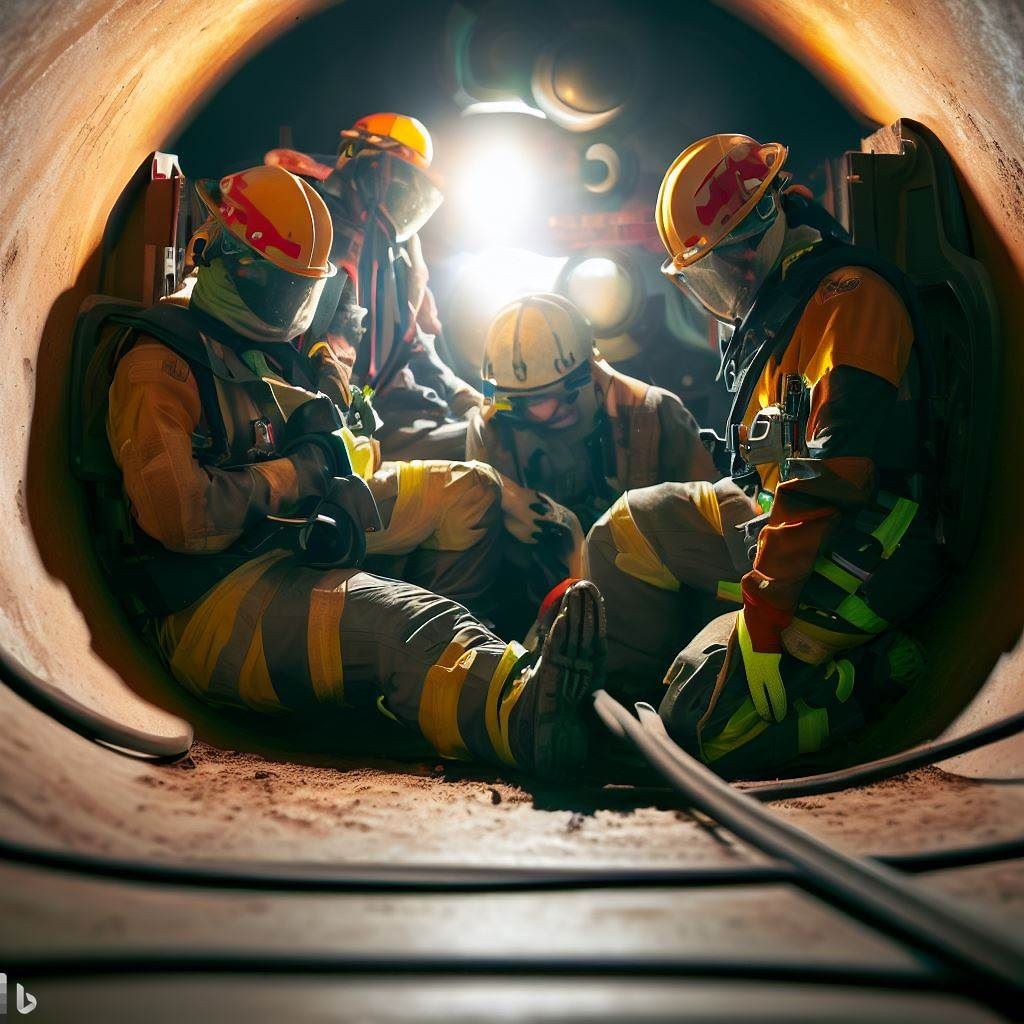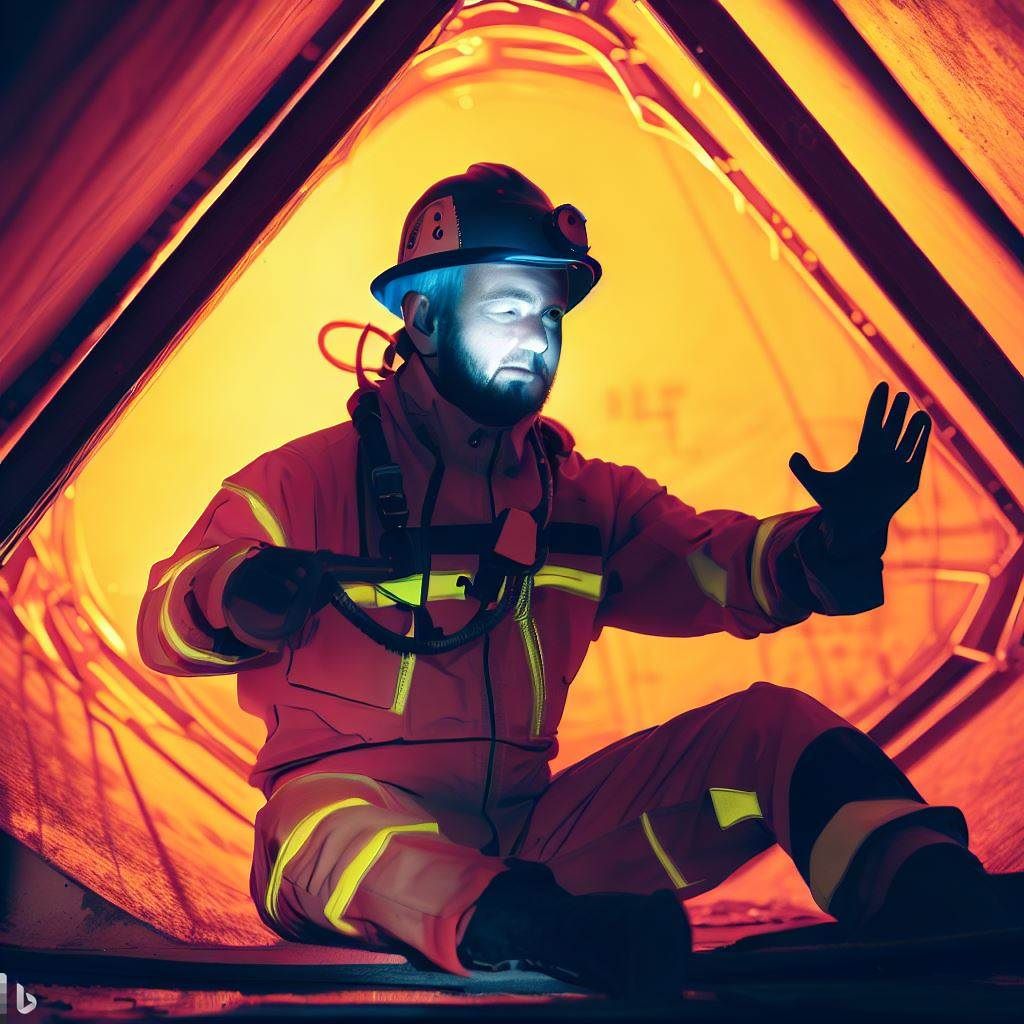Understanding the Intricacies: What is Confined Space Rescue?
As someone involved in safety operations for the better part of my career, I’ve often engaged in conversations explaining the term ‘confined space rescue’. While it may sound like a niche field within rescue operations, it’s critical to ensuring safety across various industries. This article is my attempt at shedding light on this subject, hoping to understand what confined space rescue entails comprehensively.
Confined space rescue is a specialized rescue operation that is often complex and dangerous, requiring a high degree of training and expertise. It’s not just about getting people out of tight spots; it’s about doing it safely, efficiently, and without putting the rescuers or the rescued at unnecessary risk.
In my experience, a lack of understanding or underestimation of the risks associated with confined spaces can lead to devastating consequences. Thus, I believe educating ourselves on this topic is crucial for professionals in the field and anyone who might encounter such a situation.
What is Confined Space Rescue?
To answer the question – “What is confined space rescue?” – let’s first understand what a confined space is. A confined space is any place, including any chamber, tank, vat, silo, pit, trench, pipe, sewer, flue, well, or other similar space which, by its enclosed nature, poses a health or safety risk.
Confined space rescue is the specialized rescue operation that involves the safe recovery of victims trapped in confined spaces or in situations where their health is at risk due to the environment or material within the confined space.
Over the years, I’ve observed that confined space rescues can be challenging due to the environment’s unpredictability, limited access and egress, and potential exposure to hazardous substances. These factors make it imperative for rescue teams to be well-trained, quick, and effective in responding.

Importance of Confined Space Rescue
The importance of confined space rescue cannot be overstated. Each year, numerous workers are injured or die in confined spaces due to lack of oxygen, exposure to hazardous gases, fire, explosions, and other risks. Confined space rescue aims to prevent such incidents, ensuring the safety of people working in and around these spaces.
Confined space rescue is also important because it sets standards and best practices for industries with confined spaces. It ensures that safety protocols are followed and helps increase general awareness about the risks involved in confined spaces. Moreover, effective confined space rescue operations can save lives and prevent injuries. It can also help organizations avoid legal repercussions and financial losses from accidents or mishaps in confined spaces.
Types of Confined Spaces
There are various confined spaces, each with unique challenges and risks. Common types include storage tanks, silos, vats, pits, pipes, sewers, wells, and trenches. Storage tanks, vats, and silos are often used in industries such as food and beverage, oil and gas, and chemicals. These spaces are usually enclosed and may contain hazardous substances, posing risks such as exposure to harmful gases, fire, and explosions.
Pits, pipes, sewers, and trenches are usually found in construction, utilities, and public works. These spaces can be dangerous due to the risk of collapses, flooding, or the presence of hazardous materials. On the other hand, Wells are typically deep and narrow and may contain gases or liquids. They pose a risk of falls, drowning, or exposure to hazardous substances.
Risks Involved in Confined Spaces
Confined spaces are inherently risky due to their enclosed nature and the potential presence of hazardous substances. Common risks include lack of oxygen, exposure to harmful gases, fire or explosion, collapses, and flooding. Lack of oxygen can be deadly, and it’s one of the most common risks in confined spaces. This can occur if the space is not properly ventilated or if another gas displaces the oxygen.
Exposure to harmful gases is another major risk. Many confined spaces contain gases that can be harmful or even fatal if inhaled. These gases can also be flammable or explosive, adding to the danger. Collapses and flooding are risks in confined spaces such as trenches or sewers. A collapse can trap workers inside, while flooding can cause drowning or hypothermia.
The Process of Confined Space Rescue
The process of confined space rescue begins with assessing the situation and the confined space. This includes identifying the type of confined space, the potential risks, and the resources required for the rescue operation. Once the situation is assessed, a rescue plan is developed. The plan outlines the steps during the rescue operation and assigns roles to each team member.
The rescue operation is then carried out, following the rescue plan. This typically involves securing the area, ventilating the confined space, monitoring the air quality, and retrieving the victim using specialized equipment and techniques. After the rescue operation, a debriefing is conducted to review the operation and identify any lessons learned. This helps in improving future rescue operations.
Training for Confined Space Rescue
Training for confined space rescue is crucial for the safety and effectiveness of rescue operations. It involves learning about the different types of confined spaces, the risks involved, and the techniques and equipment used in rescue operations.
The training also includes practical exercises, where trainees practice their skills in simulated confined spaces. This helps them gain hands-on experience and prepares them for real-life situations. In addition to technical skills, the training also focuses on teamwork and communication. These are essential for coordinating the rescue operation and ensuring the safety of all involved.
Legal Requirements for Confined Space Rescue
There are legal requirements for confined space rescue, which are aimed at ensuring the safety of workers and rescue teams. These requirements vary by country and industry but generally include the following:
- Assessment of confined spaces and potential risks
- Development of a rescue plan
- Provision of appropriate safety equipment
- Training for workers and rescue teams
- Regular inspection and maintenance of confined spaces and safety equipment
- Reporting and investigation of incidents
Non-compliance with these requirements can result in legal repercussions, including fines and imprisonment.

Case Studies of Confined Space Rescue
Over the years, numerous cases of confined space rescue have been highlighted, each highlighting the importance of safety measures and the challenges rescue teams face. One such case involved a worker who was trapped in a sewer pipe. The rescue team had to navigate through a complex network of pipes in a hazardous environment to reach the worker.
Thanks to their training and expertise, they successfully rescued the worker without any injuries. Another case involved a worker trapped in a silo filled with grain. The rescue team had to carefully remove the grain without causing it to collapse on the worker. Their meticulous planning and execution saved the worker’s life.
Conclusion
Understanding the intricacies of confined space rescue is crucial for anyone working in industries that involve such spaces. It’s about knowing the risks, managing them, and responding effectively in an emergency. I hope this article has provided a comprehensive answer to the question, “What is confined space rescue?” and has shed light on its importance, the risks involved, and the process of rescue operations. Remember, safety should always be our top priority.
Frequently Asked Questions:
What is a confined space?
A confined space is any enclosed place that poses a health or safety risk.
What are the risks involved in confined spaces?
The risks include lack of oxygen, exposure to harmful gases, fire or explosion, collapses, and flooding.
What is the process of confined space rescue?
The process involves assessing the situation, developing a rescue plan, carrying out the rescue operation, and debriefing afterward.
What is the importance of training for confined space rescue?
Training ensures the safety and effectiveness of rescue operations and prepares rescue teams for real-life situations.
What are the legal requirements for confined space rescue?
The requirements include assessing confined spaces, developing a rescue plan, providing safety equipment, training for workers and rescue teams, and regular inspection and maintenance.
